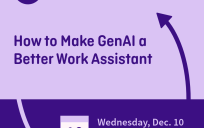Federal agency and department presence on social media varies widely—some have multiple accounts on various platforms while others have just a page or two that is updated infrequently. I wanted to find out what makes some sites more useful than others, so I set out to look at as many federal social media pages as I could to make a determination about which are doing well and which could use a little help. Over the next few weeks, I’ll share with you my thoughts on how various departments and agencies are faring on the various social media platforms, and what you can learn from them. This week, I’m focusing specifically on Facebook.
To give you an idea of how I went about this project, I looked through approximately 105 Facebook pages. On each, I looked at how frequently the page is updated, what information is shared, whether the information shared speaks to the agency’s mission and is useful to the audience, the level of engagement of the audience (through likes, shares, and comments), how frequently the agency/department responds to audience comments or questions, and the overall number of followers. And I looked all the way back to the Facebook page beginnings to determine how interaction and posts have changed over time.
Overall, I was surprised by what I found. Most of the pages that I looked at had useful information that was being viewed by at least a small audience. The biggest negative that I saw throughout many pages was information posted in government speak rather than something the general population can understand. There were also some agencies/departments that didn’t harness the platform’s resources and simply reposted press releases and other main website content without any commentary or new information.
All that said, of the 105 I looked at, here are my favorites (in no particular order), what I think they’re doing well, and what the key takeaway is for you if you’re working on your agency or department’s Facebook page.
- NASA: With 11 million page likes, NASA’s Facebook appeal is easy to see. Not only do they share cool pictures, they also offer information and updates on current and ongoing projects, and sometimes profile the crews behind these programs. Key takeaway: Be visual with what you share, but also find fun ways to tell your audience about how the work in your department or agency gets done. Who are the people behind the curtain?
- Air Force/Army/Marines: These three pages are some of the best at engagement. It is easy to see that they are harnessing their built-in audience of veterans, active duty military, and family and friends to develop a community where they can share information, successes, veteran profiles, answer questions about how to join the various service branches, and much more. Key takeaway: Really consider who your audience is and target your posts to them.
- NIH: The page offers great information on staying healthy, posts links to articles, briefly explains new studies in plain English, redirects commenters as to where to seek assistance, and solicits ideas from the community on a variety of topics. I viewed this page right before I looked at the FDA page, and the two presented an interesting juxtaposition in that FDA, while still offering useful information, is far less conversational and some of the posts are difficult to understand because they are not written in plain English. Key takeaway: When you deal with difficult-to-understand or explain topics, find a way to break down the information for the general public.
- VA/VBA/Real Warriors (run by the Defense Centers of Excellence for Psychological Health and Traumatic Brain Injury): I liked all of these pages because, much like the service branches, they directly target their audience and help veterans connect to the services they need. On the VA page, for example, I noticed a number of instances in which someone posted about either excellent or poor service received at a VA facility, and the page administrator responded to collect additional information or explain how to submit a formal complaint. On the Real Warriors site (while not a government agency in itself), its easy to see how the administrators are trying to use community support to help those in need who might be afraid to seek it. Key takeaway: If you offer services, use some of your page to help the public easily gain access to those services, and be ready to answer questions about them.
- USAJobs: Not only do they post a ton of jobs that end up on the USAJobs website, this page was my favorite example of an amazing level of response from the page administrators. Key takeaway: Be prepared to respond to as many of the (legitimate) questions or comments you receive.
- NPS: This is probably another obvious one like NASA because it has amazing pictures to share. But what I really like is that it goes beyond what everyone knows about National Parks and tries to profile portions of the parks or ways to see them that some people might not be familiar with. Key takeaway: You can use your Facebook page to inform about all of the things that you do or offer. Don’t be pigeonholed by what your audience thinks are the only things that you do. Expand their knowledge and share your awesomeness!
What is your favorite agency or department Facebook page? What do you think they’re doing well? What would you like to see improved?
Hot tip – also make sure to check out GovLoop’s recent publication, Government’s Guide to Using Facebook, for more.





My agency, the Omaha District Corps of Engineers, has recently entered the Facebook world. Posts include info about the Corps and its projects, job announcements, safety / flooding information, and fun facts. I think adding a Facebook page has helped inform people about what we do.
[…] Full Story: Top Takeaways From Some of the Best Fed Facebook Pages – GovLoop […]